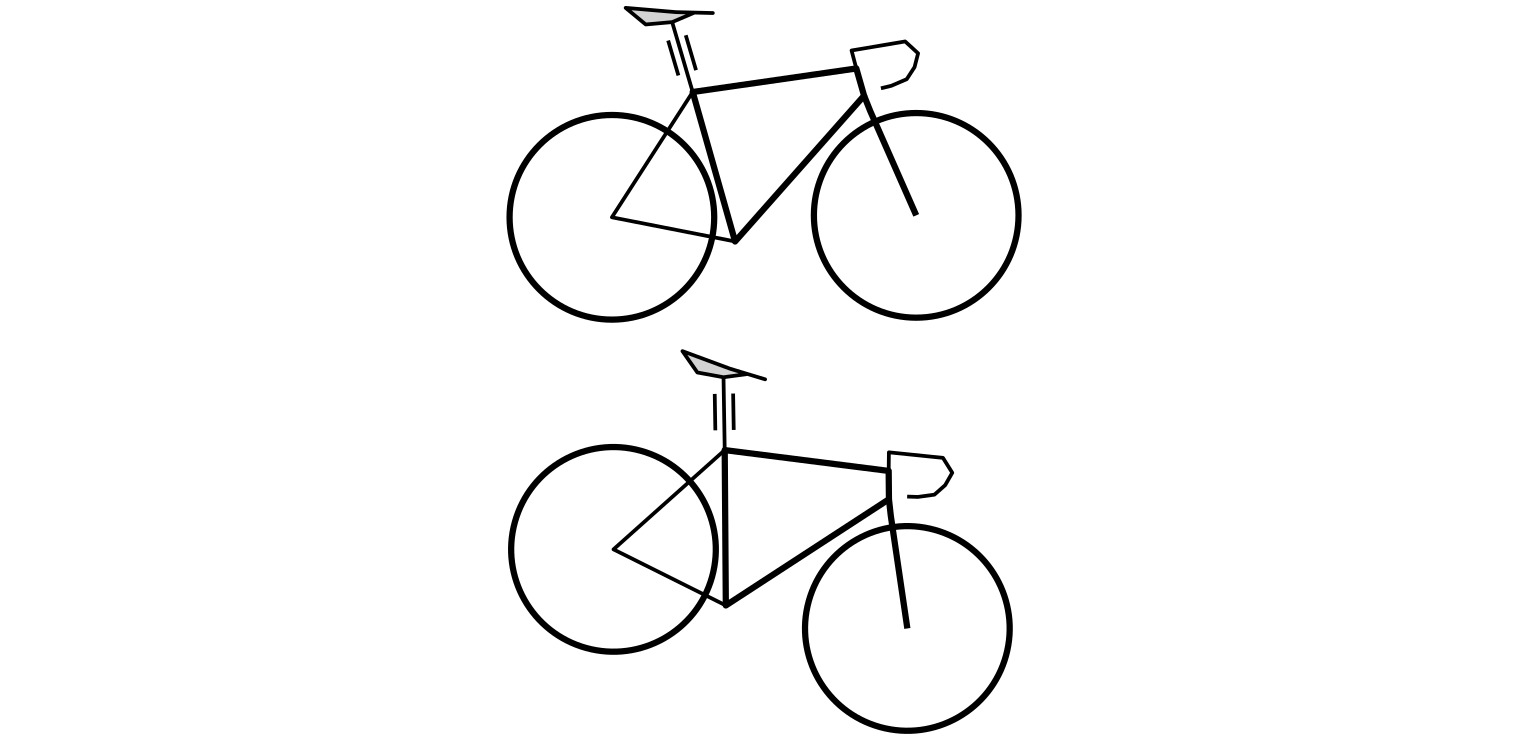After you've experimented with various rotations of the bike on a stand, which position do you end up using?
I initially thought that the logical position is to align the wheels so they're at equal distances from the ground.
That doesn't work so well. The handlebar will not stay put without hooking the extra support bar. (The main disadvantage of the support bar is that instead of spending a few seconds to set the bike and close a quick release, it's necessary to tinker for several times that much. If it can be avoided, at least for quick jobs, it's better.) Another factor, the bending moment applied on the seat post, may not be a cause for worry, since the bike itself is so much lighter than the rider on the seat.
In any case, it's pointless to make the bike look like it's about to fly. It's perhaps more sensible to keep the seat post (and we should be hanging it from the seatpost to avoid crushing the frame) vertical, as in the second diagram above.
Now even in that position the handlebar could tilt.
Do you tilt a bike on the stand all the way until the fork, not just the seat post, is vertical?
Update (after Henry A. Kissinger's comment)
Another way of asking this is: Does tilting the bike until either the seatpost or the fork is vertical impede any repairs? Is there any advantage to keeping the bike level?

